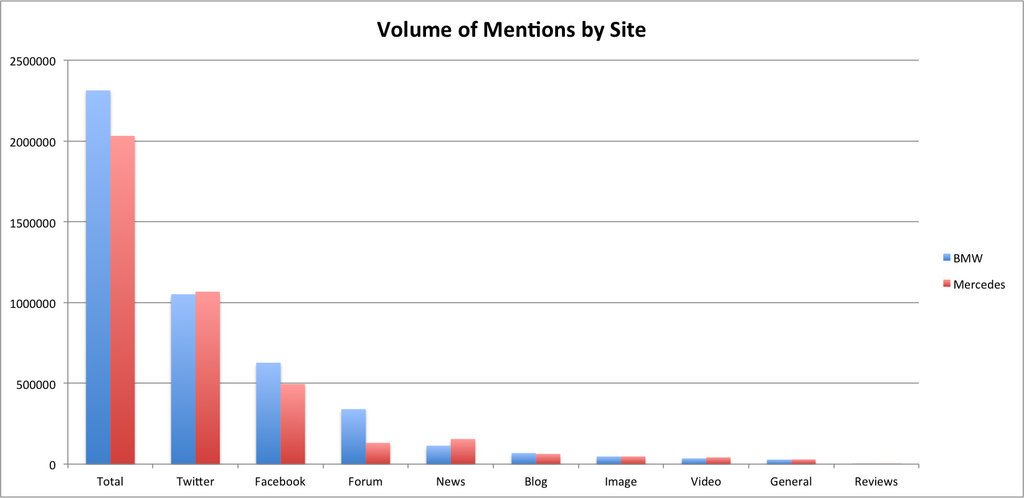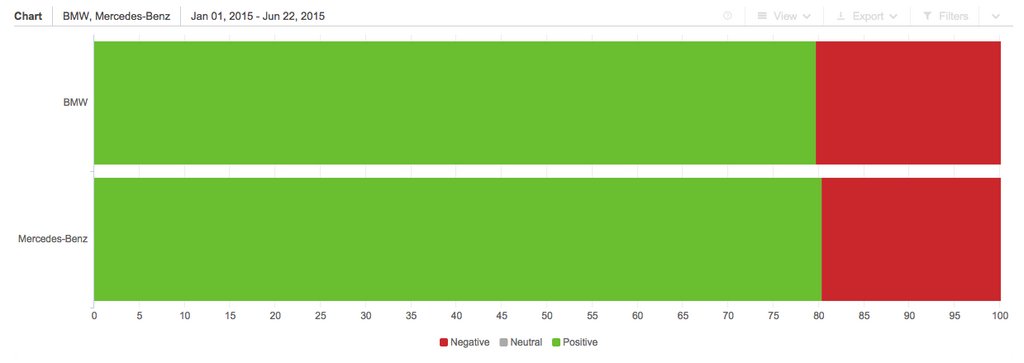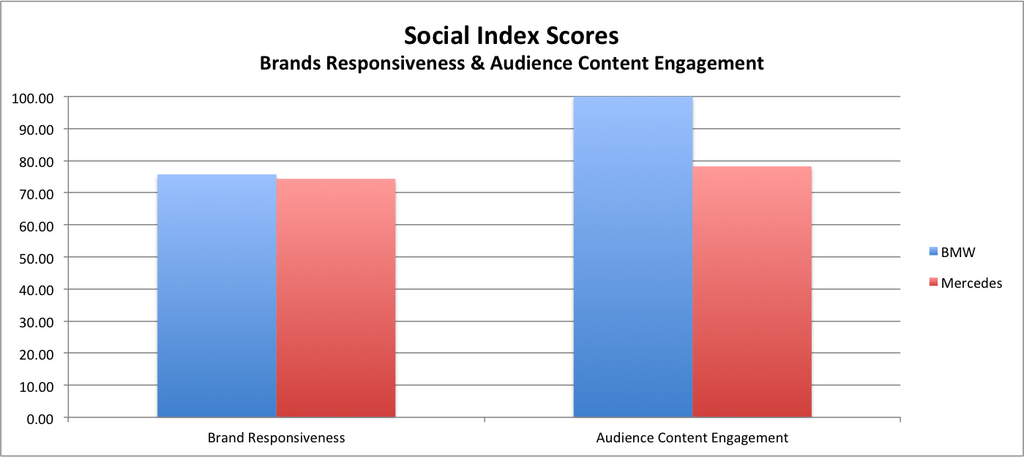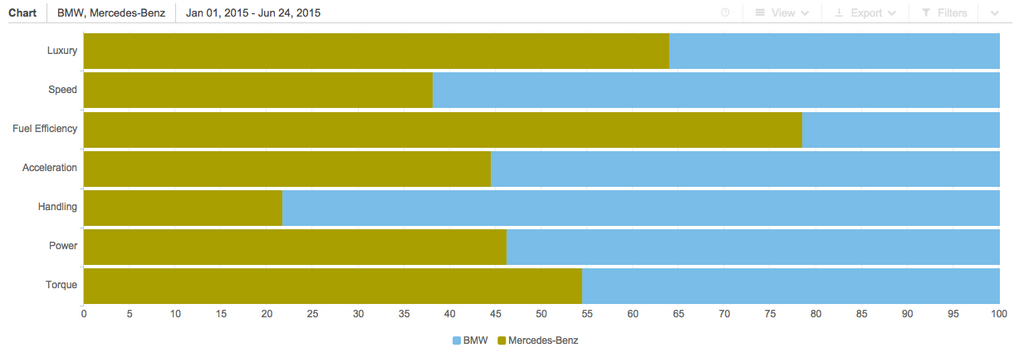20 Social Media Holidays to Celebrate This May
By Yasmin PierreApr 10
Unlock the secrets to staying ahead in the ever-evolving world of social media marketing.
Published June 26th 2015
Welcome to the second installment in the social presence showdown series. In last month’s showdown, we examined the age old soda wars, finally deciding a victor between longtime rivals Coke and Pepsi.
Today, we focus on brands of a different caliber: Mercedes-Benz and BMW.
For decades, these German titans have loomed in the upper echelons of automobile manufacturing, protected by a persistent heritage and propelled by an unrivaled focus on future innovation.
Whereas traditional brands often lag on social, innovative brands will lead the pack. As such, brands like Mercedes and BMW represent an interesting dichotomy: how to maintain a traditional values while fully leveraging the capabilities of modern social media?
While many brands will fail to adapt to such push and pull, BMW and Mercedes have actually fared quite well on social media.
The following analysis looks at around half a million mentions from January 1st – June 24th across three unique data streams:
First, let’s examine the overall share of voice by site:

BMW slightly outweighs that of Mercedes with about 53% of the total conversation.
Yet the score is close – Mercedes receives more mentions on Twitter and news outlets while BMW maintains a strong advantage on Facebook and forums.
Still, recognizing that not all mentions are equal, we’ll turn next to sentiment to see if the aggregate tone of conversation provides any context to these conversations.
Automatic sentiment analyses, despite inherent flaws, are often a good gauge of a brand’s temperature – if there’s anything dramatic happening, our natural language processing will generally uncover it.

In this case, the brands’ net sentiment scores are alarmingly similar.
BMW’s negative topics include several news articles relaying that BMW’s sales fell below that of Audi and Mercedes in January, a first for Mercedes since 2010. A large portion of Mercedes’ negative comments reference a point at which a Ferrari outpaced a Mercedes in a Formula 1 race.
Still, nothing in the sentiment data provides any reason to definitively determine a social leader.
Our proprietary social index, essentially designed to parse about brands’ social performance within an industry, finally tips the scales in favor of BMW.

In Brand Responsiveness, a measurement of how consistent and effective brands are at responding to their audience, the two brands perform similarly.
However, the Audience Content Engagement scores reveal that BMW’s audience reacts or engages with the brand’s content significantly more than Mercedes’ audience does.
To better understand how people directly compare two products, one effective strategy is to simply identify and qualitatively evaluate conversations that mention both brands in the same sentence.
Too often social media analysts will get so enthralled in the aggregated datasets that they’ll neglect the variety of emotions and nuanced opinions at the individual level.
For Mercedes and BMW, the micro analysis reveals a competitive analysis of the two brands.
With some exceptions, BMW is often placed before Mercedes in mentions linking to side-by-side races on YouTube. On the other hand, Mercedes-Benz is lauded for its luxury features:

These smaller, qualitative insights are powerful and shed light on the true pulse of a brand. Still, we’ll need aggregate data to prove that these opinions do indeed reflect a general public consensus.
The chart below analyzes the presence of several key words across the two brands:

For Mercedes-Benz, conversations around Fuel Efficiency and Luxury stand out. For BMW, Speed and Handling were key topics.
Uncovering the language that the public associates with these automobile companies finally reveals the divide between their branding.
For car enthusiasts, these differences are most apparent behind the wheel – for average consumers, these differences are reflected by the views of expert reviews and branding.
Unlike the last showdown, this one feels a bit more moderate.
The data dump suggests that despite Mercedes-Benz’s larger following, BMW’s is slightly more receptive to their content. BMW generates more conversation from less content and fewer followers. While just shy of Mercedes’ volume on Twitter, BMW is dominant on Facebook and Forums, where the shelf life of a mention or conversation is longer.
Ultimately, the BMW brand wins the race by a hair’s length.
Still, the difference is marginal at best. The real story lies in the direct comparisons. Chiefly, the public is wholly confident in both brands but finds unique expertise for each.
Comparative advantages, as seen in the linguistic association analysis, may hold the key for one of these brands to truly pull ahead of the other.
Identifying their strengths and weakness, brands can strategically decide to either emphasize the value of their unique strengths, devalue their weaknesses, or reposition their approach to the areas in which their competitors are winning.
The map below depicts how much the ratio of BMW/Mercedes conversation deviates from the national average for each state:
The map reveals geographical clusters in the volume of conversation for the two brands. In this instance, BMW and Mercedes-Benz may consider how the geography of social advocacy relates to actual sales.
Ideally, a brand will want the greatest advocacy in locations with the highest potential sales or value.
In truth, this social showdown reveals that between BMW and Mercedes-Benz, it’s really anyone’s game.
The two brands have emphasized certain aspects of their image and their unique positions successfully.
Identifying and understanding how branding efforts affect the conversations that influence the public’s purchase decisions will be crucial to ensure that these ancient brands continue to evolve and adapt.
If you have any questions about this analysis or suggestions for the next Social Presence Showdown, please Tweet @Brandwatch and let us know!
Offering up analysis and data on everything from the events of the day to the latest consumer trends. Subscribe to keep your finger on the world’s pulse.
Existing customer?Log in to access your existing Falcon products and data via the login menu on the top right of the page.New customer?You'll find the former Falcon products under 'Social Media Management' if you go to 'Our Suite' in the navigation.
Brandwatch acquired Paladin in March 2022. It's now called Influence, which is part of Brandwatch's Social Media Management solution.Want to access your Paladin account?Use the login menu at the top right corner.